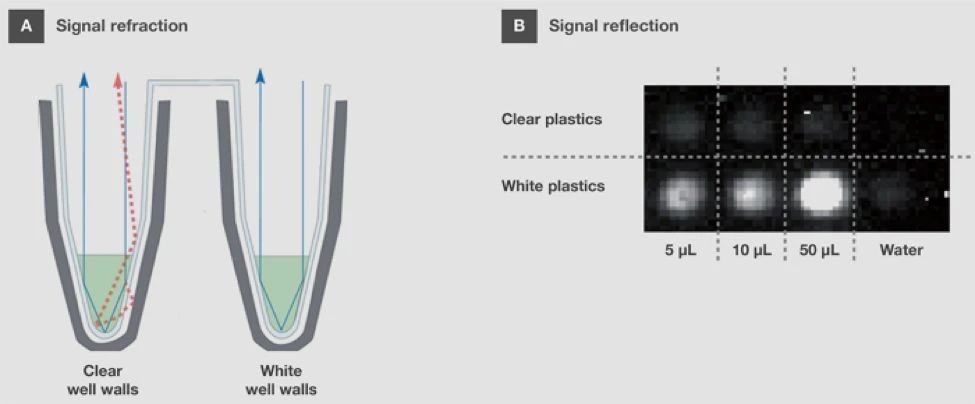PCR plates are very familiar to those who frequently conduct molecular experiments, but do you know the types or styles of PCR plates? Are the ones you're using matching your equipment? Below, let's identify the various types of 96-well PCR plates.
PCR Plates with Different Volumes
0.1ml Low Profile & 0.2ml High Profile
Usually, PCR plates come in two heights: the higher ones are commonly referred to as 0.2ml volume, and the shorter ones are referred to as 0.1ml volume, also known as "low profile" (low volume).
The shorter design of 0.1ml low volume consumables minimizes the space above the reaction system, reducing evaporation effects and improving thermal conductance efficiency, hence they are also called "fast" tubes or plates.
Quantitative PCR instruments that use 0.1ml low volume 96-well plates can usually run rapid programs. Whether this type of low volume plate can be used is determined by the instrument manufacturer when designing the equipment; not all PCR instruments can use them.
Colors of Different PCR Plates
Transparent & Frosted & Opaque White
PCR plates come with transparent wells, frosted wells, and opaque white wells. Which is better, transparent or opaque white wells? Actually, both are good if used correctly.
For qPCR instruments that require end-point signal readings, white tubes offer relatively higher sensitivity and consistency. White consumables enhance qPCR data sensitivity and consistency by preventing fluorescent refraction (Fig. A). When refraction is minimized, more signal is reflected back to the detector, thus increasing the signal-to-noise ratio (Fig. B).

White tube walls can prevent the fluorescence signal from being transmitted to the PCR instrument module, avoiding absorption or inconsistent reflection of the fluorescent signal, thereby minimizing differences in repetitive experiments. In rare cases, if the fluorescence detector becomes oversaturated due to enhanced signal reflection from the white wells, frosted wells can be used instead.
PCR Plates with Different Skirt Designs
Nonskirted & Semi-skirted & Full-skirted
Nonskirted
Compatible with most PCR instruments and real-time PCR modules, easy to cut, but not suitable for automated applications.
Semi-skirted
Provides sufficient support with short edges around the board's perimeter, reducing deformation and bending during heating or pipetting.
Full-skirted
Has edges covering the plate height, suitable for automated operations.
The skirt provides stability and support during pipetting processes and offers mechanical strength and gripping when combined with automated workstations.
Different Top Surface Designs of PCR plates
Raised Edges & Flat Surface
The top surface refers to the upper surface of the plate. A fully flat plate design is compatible with most PCR instruments, making it easy to seal and handle.
Raised edge plate design is optimally compatible with certain PCR instruments, helping balance thermal lid pressure without the need for an adapter, ensuring optimal heat transfer and reliable experimental results.
Typically, Thermo (ABI) brand fluorescence quantification PCR instruments recommend using these raised edge 96-well plates.
PCR Plates with Different Cut Corner Positions
A1 & A12 & H1 & A12 & H12 Cut Corner
A cut corner is a missing corner of a PCR plate which depends on the specific instrument it needs to fit. The cut corner may be located at the H1, H12, or A12 position of the 96-well plate.
Different cut corner positions can affect whether a PCR plate can match the adapter of a PCR instrument.
In other words, if the plate doesn't fit into the instrument, it definitely can't be used.
PCR Plates with Different Markings
Natural Color Markings & Black Letter Markings
PCR plates are marked with alphanumeric characters to help identify individual wells and the corresponding sample positions.
Usually, the markings are white or black raised letters for easy viewing.